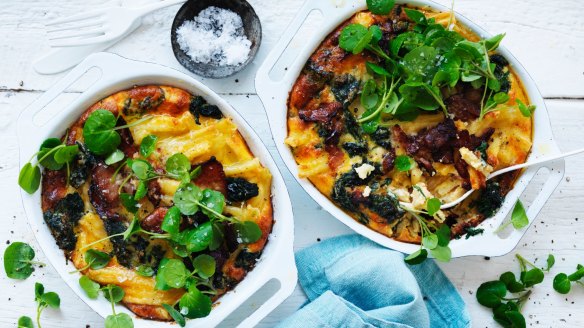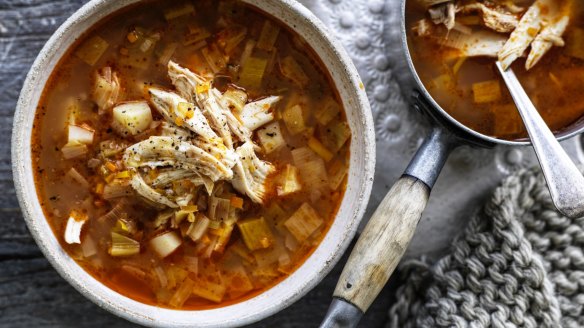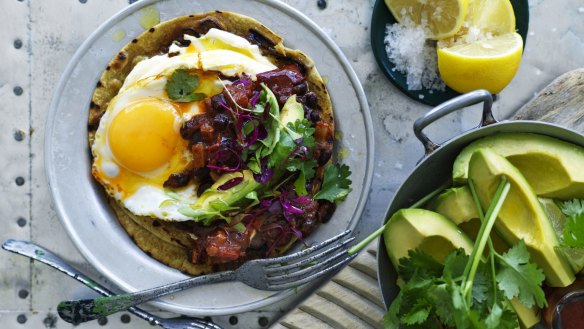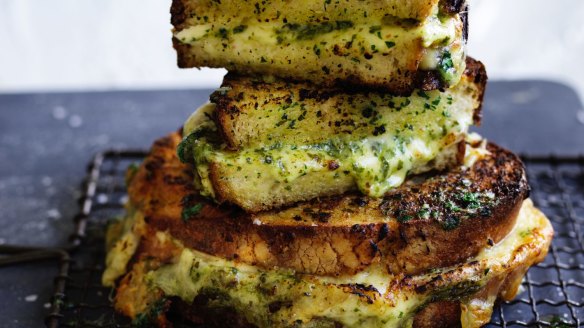Hate leftovers? 10 tips to make yesterday's meals more exciting today

Not thinking ahead about leftovers is one of the biggest mistakes that home cooks make.
The best cooks I know are thinking about the meals they'll make with leftovers while they are making the initial meal itself.

That might look like making extra protein or vegetables knowing that the following day, they'll incorporate those into a sandwich or a grain salad. Or that might mean using a neutral seasoning when roasting or sauteing vegetables (or meat) so they can be seasoned in a different way later in the week.
Rolling one meal into the next can take practice, though, so here are 10 ideas for using or spiffing up leftovers. This helps cut down on food waste and your grocery bill, and it also cuts down on the amount of time and mental energy it takes to put food on the table.
1. When simply reheating leftover food and not transforming it into something else, use a cast iron skillet to heat it up instead of a microwave. Microwaves are handy for lots of things, but leftovers are universally better when reheated on the stove. Many leftovers suffer from sogginess, and a cast iron skillet dries food out to caramelise the edges, giving the food much-needed texture. This applies to everything from potatoes to pasta. For some reason, even soup or chilli con carne tastes better when reheated in a small pan instead of a microwave.

2. When transforming one dish into another, think about the life cycle of the dish. For thousands of years, cooks have been cooking, say, a whole chicken for dinner one night, making something else on the second night - enchiladas, empanadas, tacos, stir fry - and then making soup or casserole - such as a shepherd's or pot pie - on the third. It's good to get into the habit of thinking ahead about how one meal rolls into the next, rather than thinking about each meal individually.
3. Because cooks have been trying to cut down on wasted food since, well, the beginning of cooking, every culture has dishes that are meant to absorb the odd bits left over from last night's dinner. Two of the best known are likely frittatas (or quiche) and fried rice or stir-fry, which can use up vegetables like grilled capsicum, roasted sweet potatoes or sauteed kale, as well as cooked and sliced pork chops, steak, chicken or tempeh.
4. Put a fried egg on top. I think fried eggs can go on just about anything, and I'm convinced that any vegetable can become a hash. I had green beans for breakfast for the first time recently when I sauteed leftover spicy green beans as a bed for, you guessed it, fried eggs.

5. When rice or eggs can't save the day, flatbread can. Pita, naan, tortillas or a fresh baguette aren't exactly a meal on their own, but they can stretch yesterday's main dish into a second night. For example, leftover eggplant parmigiana or meatballs wouldn't work in a frittata, but they would in a sandwich.
6. Add one element that's fresh. If you know you have a bunch of one kind of food left over, think of something you could make fresh that would complement it or freshen it up. That could be a freshly cooked batch of rice noodles, bowtie pasta, farro or quinoa that would turn last night's grilled eggplant or charred capsicum into a hearty main dish. If you have roasted chickpeas or sausage, you could serve those on a bed of fresh salad greens.
7. Save the sauce. Leftover salsa can season black beans or a chicken tortilla soup. You could simmer a tomato pasta sauce with chilli powder and garlic and transform it into an enchilada sauce. Leftover red sauce is also a good base for minestrone. Satay sauce for chicken skewers could then season a rice noodle dish. Ponzu could become a marinade for chicken or tofu.
8. Cheese is your friend. Chopping up and mixing leftovers together might seem like you're creating a mishmash of textures and flavours, but melted cheese has a way of holding it all together, whether it's as a pizza, a quesadilla or a grown-up grilled cheese sandwich. If you have a collection of almost-finished wedges of cheese, make a mac and cheese. (Make a bechamel with flour and butter or use cream cheese as your emulsifier.)
9. And then make soup. Or stew. Or minestrone or curry. At the end of every week, every culture has a soup that gives one last bit of love to all the week's leftovers. For many years (okay, maybe even still), I got stuck thinking that I have to make a huge pot of soup – probably because soup pots are so large – and then I end up having to throw away that extra soup because I've made too much and can't eat it anymore. Using a smaller saucepan and forcing myself to use only whatever is left over is helping me make more reasonable batches. The key is adding the already cooked ingredients at the end so they are only reheating and not continuing to break down.
10. Some foods are harder to save than others, no matter what you do. Brussels sprouts get more bitter over time. Soggy pasta is soggy pasta. Steamed broccoli doesn't really hold up unless you're making a broccoli cheddar soup. Leafy green salads don't generally hold up from day to day, so keep the dressing and garnishes separate so you don't have to throw away the whole salad.
Tribune Content Agency
The best recipes from Australia's leading chefs straight to your inbox.
Sign up- More:
- How to